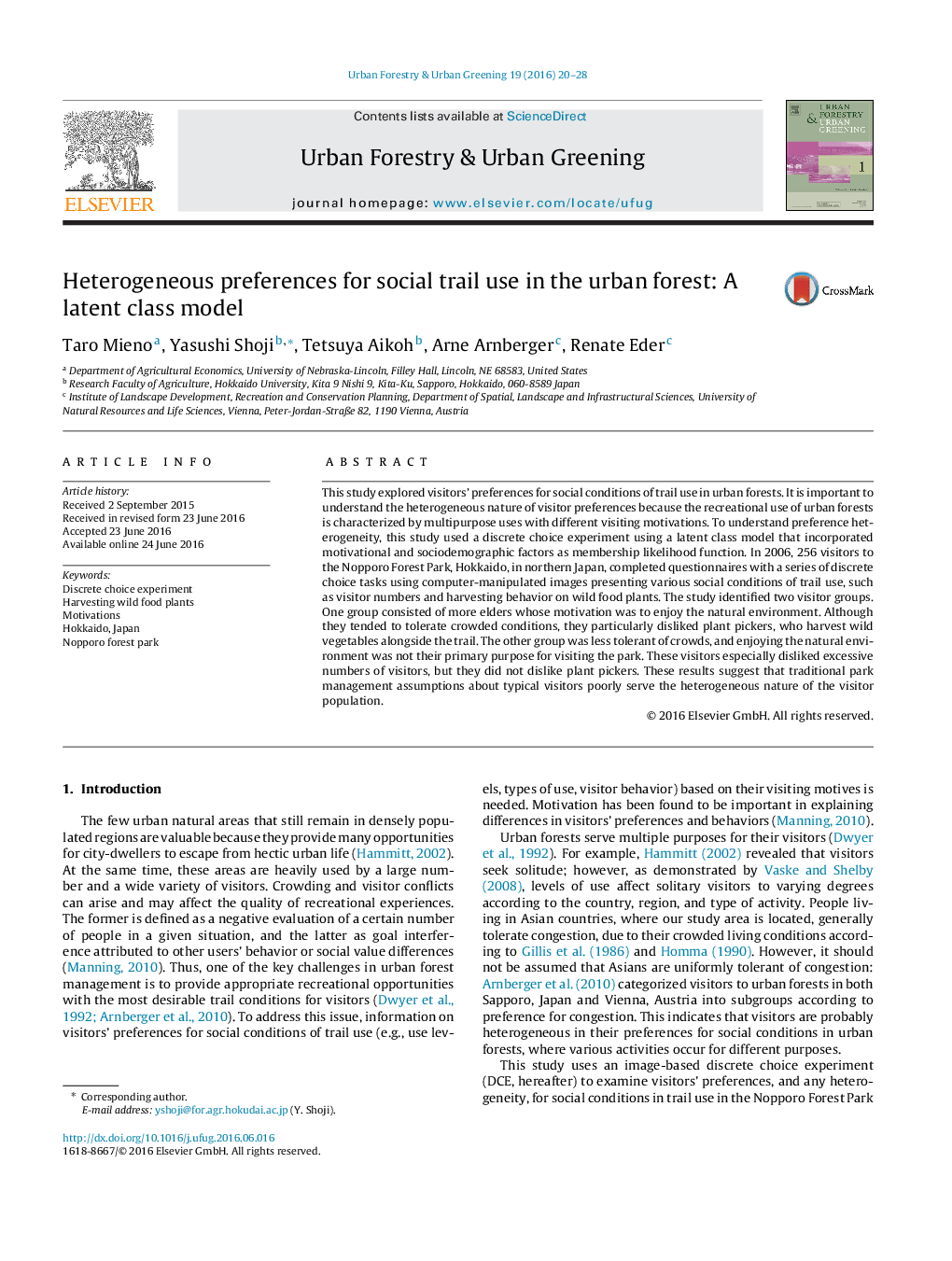| Article ID | Journal | Published Year | Pages | File Type |
|---|---|---|---|---|
| 93911 | Urban Forestry & Urban Greening | 2016 | 9 Pages |
•A latent class model estimation is used to identify the source of preference heterogeneity.•There are mainly two preference groups whose interests may conflict.•Existence of preference heterogeneity suggests the potential benefits of zoning of the park.•Poaching activity has a significant negative impact on visitors’ experience.
This study explored visitors’ preferences for social conditions of trail use in urban forests. It is important to understand the heterogeneous nature of visitor preferences because the recreational use of urban forests is characterized by multipurpose uses with different visiting motivations. To understand preference heterogeneity, this study used a discrete choice experiment using a latent class model that incorporated motivational and sociodemographic factors as membership likelihood function. In 2006, 256 visitors to the Nopporo Forest Park, Hokkaido, in northern Japan, completed questionnaires with a series of discrete choice tasks using computer-manipulated images presenting various social conditions of trail use, such as visitor numbers and harvesting behavior on wild food plants. The study identified two visitor groups. One group consisted of more elders whose motivation was to enjoy the natural environment. Although they tended to tolerate crowded conditions, they particularly disliked plant pickers, who harvest wild vegetables alongside the trail. The other group was less tolerant of crowds, and enjoying the natural environment was not their primary purpose for visiting the park. These visitors especially disliked excessive numbers of visitors, but they did not dislike plant pickers. These results suggest that traditional park management assumptions about typical visitors poorly serve the heterogeneous nature of the visitor population.
